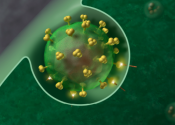The 'mosquito effect': How tumor cells outwit the body's immune system
In a first-of-its-kind research breakthrough, a team of scientists at the University of Massachusetts Amherst has analyzed and described what they call the "mosquito effect," which sheds light on how specific pathogens, such ...
Jan 8, 2024
0
39







